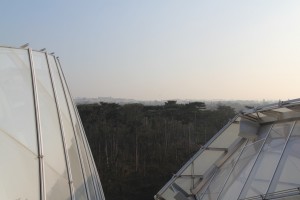 There are two benevolent kings in Paris; Arnault and Pinault. One owns nearly half of the luxury fashion industry through his group, LVMH, the other owns nearly half of the luxury fashion industry through his group, Kering (formerly Gucci). Without knowing either gentleman, nor having done any kind of research into their relationship, it is easy to imagine that there is a bit of rivalry between the two.
There are two benevolent kings in Paris; Arnault and Pinault. One owns nearly half of the luxury fashion industry through his group, LVMH, the other owns nearly half of the luxury fashion industry through his group, Kering (formerly Gucci). Without knowing either gentleman, nor having done any kind of research into their relationship, it is easy to imagine that there is a bit of rivalry between the two.
 Both men collect contemporary art and at some point they both thought it would be great if they shared their collections with their neighbors. Generous, indeed, with a bit of ego involved and probably some tax benefits to sweeten the deal. Monsieur Pinault, who has the richer collection, aimed his sites towards the abandoned Renault factory on Ile Seguin in Boulogne. Easily accessible by Paris metro, it seemed like Eden.
Both men collect contemporary art and at some point they both thought it would be great if they shared their collections with their neighbors. Generous, indeed, with a bit of ego involved and probably some tax benefits to sweeten the deal. Monsieur Pinault, who has the richer collection, aimed his sites towards the abandoned Renault factory on Ile Seguin in Boulogne. Easily accessible by Paris metro, it seemed like Eden.
But the Mayor of Boulogne started setting up road blocks and things got crazy in a uniquely Parisian kind of way until M Pinault had enough and took his art elsewhere. The wildly popular destination museum Palazzo Grassi in Venice, to be exact.
 Not to be out done, his rival, M Arnault started plans for his own museum, insisting on the great architect Frank Gehry and coming up with an ingenious plan to build his monument within the Jardin d’Acclimatation in the Bois de Boulogne in Paris. I won’t go into the specifics, by putting the museum inside of the Jardin’s concession, the project avoided alot of red tape and was given a green light.
Not to be out done, his rival, M Arnault started plans for his own museum, insisting on the great architect Frank Gehry and coming up with an ingenious plan to build his monument within the Jardin d’Acclimatation in the Bois de Boulogne in Paris. I won’t go into the specifics, by putting the museum inside of the Jardin’s concession, the project avoided alot of red tape and was given a green light.
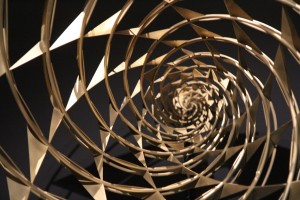 The result is Master Gehry’s Magnum Opus, the stupendous Fondation Louis Vuitton. It is a signature Gehry piece, looking very much like the crumpled wads of paper the architect uses for inspiration. But here, his twisting curves are supported by warm, wood covered beams and dressed in a light infused glassed; a poem of contradictions. The upper floors are a maze of terraces, playing with the scenery beyond. At one moment the pushing, pulling turn of frame have the visitor feeling propelled into the woods beyond, while also feeling that the woods have risen to join them on the deck, embraced by the building and the environment just beyond. It is breathtaking.
The result is Master Gehry’s Magnum Opus, the stupendous Fondation Louis Vuitton. It is a signature Gehry piece, looking very much like the crumpled wads of paper the architect uses for inspiration. But here, his twisting curves are supported by warm, wood covered beams and dressed in a light infused glassed; a poem of contradictions. The upper floors are a maze of terraces, playing with the scenery beyond. At one moment the pushing, pulling turn of frame have the visitor feeling propelled into the woods beyond, while also feeling that the woods have risen to join them on the deck, embraced by the building and the environment just beyond. It is breathtaking.
Inside, the spaces are random and disconnected. The first thing one sees are the architect’s articulated fish floating the swanky mod restaurant, Le Frank. Sbove Visitors either love or hate the Olafur Eliasson grotto below street level, but nobody is left indifferent by the diagonal fountain that flows from the Jardin d’Acclimatation to the grotto. The waves of water are irresistibly enchanting as they flow across the wide, even steps. And the auditorium with seats that fold down into the floor and an Ellsworth Kelly back drop, is so welcoming, you look forward to your next excuse for a visit, before having left for the day.
You may have noticed that this review is about the building. Disappointingly, it is the best reason to go. The art collection itself is, uhm, well, rather thin… I was blown away by a Gerhard Richter room that had disappeared by second visit, as had a rather amusing set of old fashioned telephones that played famous people reciting an eclectic collection of poetry. On this visit? Well, the Giacometti sculpture is impressive and I was amused, if not totally blown away by the Olafur Eliasson exhibition, which is surprising, because I particularly adore this artist. But the pieces chosen were not his masterpieces.
I hope the museum gets a serious curator in there who know how to put on a show. But until then, it is still an extraordinary addition to the Parisian landscape, well worth an afternoon.

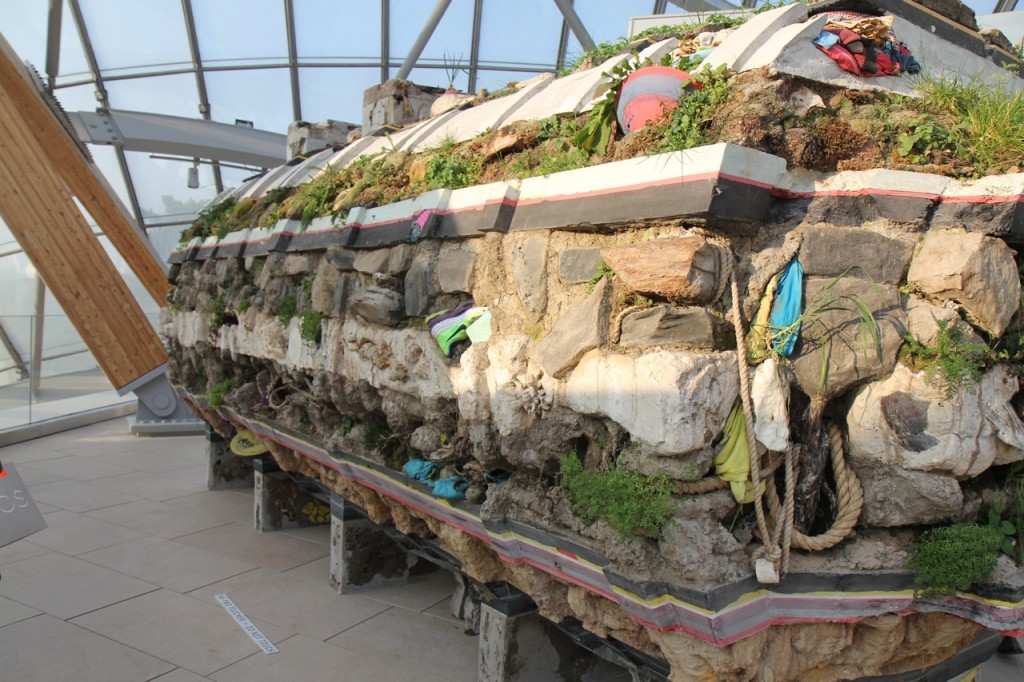
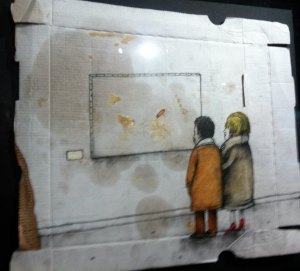

 week I posted photo of Roman Polanski in da house on
week I posted photo of Roman Polanski in da house on 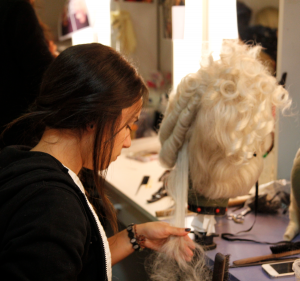 hearsals of Le Bal des Vampires at the Mogador theater.
hearsals of Le Bal des Vampires at the Mogador theater.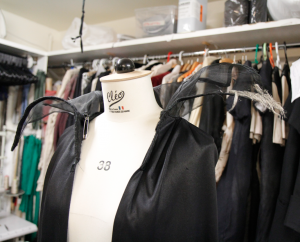 Le Bal was originally The Fearless Vampire Killers, a 1967 movie starring, written and directed by Roman. It was while on set for the film he met his future wife, Sharon Tate, who was later slaughtered by Charles Manson. And while tragedy enshrouds the reality, the movie is actually a comic satire of the vampire genre.
Le Bal was originally The Fearless Vampire Killers, a 1967 movie starring, written and directed by Roman. It was while on set for the film he met his future wife, Sharon Tate, who was later slaughtered by Charles Manson. And while tragedy enshrouds the reality, the movie is actually a comic satire of the vampire genre.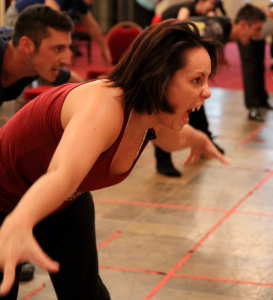 We met the stage director who explained that this was the most intricate production ever performed in France, with 22 tons of equipment filling every available nook and cranny, the writer who adapted the lyrics into French (I so want his job for French shows!), and the costume handlers.
We met the stage director who explained that this was the most intricate production ever performed in France, with 22 tons of equipment filling every available nook and cranny, the writer who adapted the lyrics into French (I so want his job for French shows!), and the costume handlers.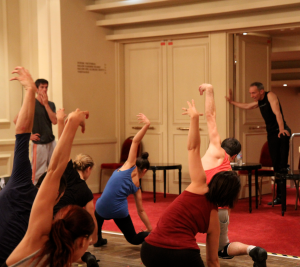 tombstones, their voices vibrating through our being, their sharp teeth surprising us in the modern context. The actors rehearse with their teeth, so they can learn to sing without slurring, or drooling anything other than blood. They also work 6 days a week, with rehearsals running to 11pm, acclimating their bodies to show time! It was an extraordinary ten minutes, listening to the song written by
tombstones, their voices vibrating through our being, their sharp teeth surprising us in the modern context. The actors rehearse with their teeth, so they can learn to sing without slurring, or drooling anything other than blood. They also work 6 days a week, with rehearsals running to 11pm, acclimating their bodies to show time! It was an extraordinary ten minutes, listening to the song written by 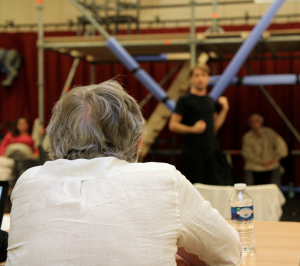 We were soon dragged out, our guide threatening us with garlic if we didn’t hurry. It was into an elevator, past a voice room, beyond a gym, and into a large, neon lit room. Before us, an awkward pile of pipes and planks, a bathtub, a piano and actors going through their lines as Roman Polanski looked intently on. What a privilege to watch the man at work. Every detail being vamped and re-vamped, with minute precision.
We were soon dragged out, our guide threatening us with garlic if we didn’t hurry. It was into an elevator, past a voice room, beyond a gym, and into a large, neon lit room. Before us, an awkward pile of pipes and planks, a bathtub, a piano and actors going through their lines as Roman Polanski looked intently on. What a privilege to watch the man at work. Every detail being vamped and re-vamped, with minute precision.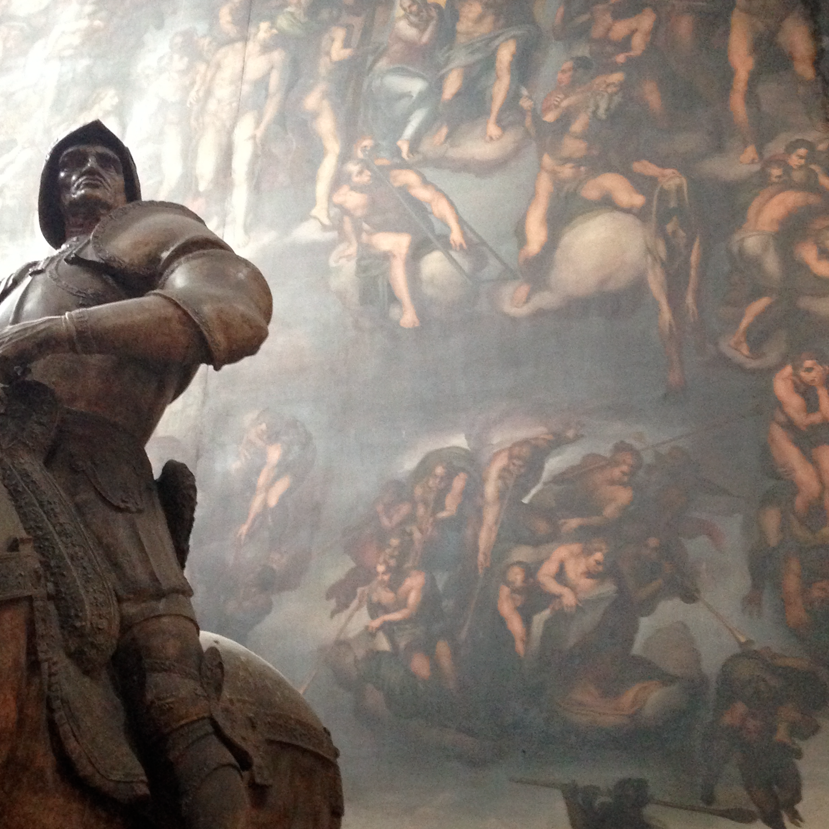
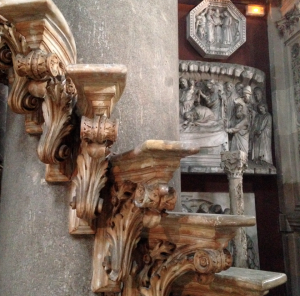 Observatory nearby. Last year, we stopped by the Manufacture de Sèvres.
Observatory nearby. Last year, we stopped by the Manufacture de Sèvres.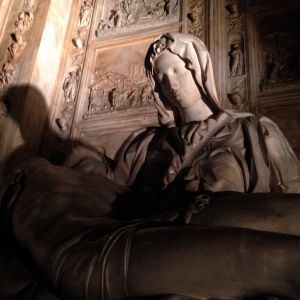 This year, I was not in the mood to stand in lines and deal with crowds, so we just went for a stroll. It would seem the universe had other plans for us, and along our walk we passed the fine arts college, Ecole des Beaux Arts. The school was open to visitors and I was very curious to see inside, because the school has been getting a lot of press lately.
This year, I was not in the mood to stand in lines and deal with crowds, so we just went for a stroll. It would seem the universe had other plans for us, and along our walk we passed the fine arts college, Ecole des Beaux Arts. The school was open to visitors and I was very curious to see inside, because the school has been getting a lot of press lately.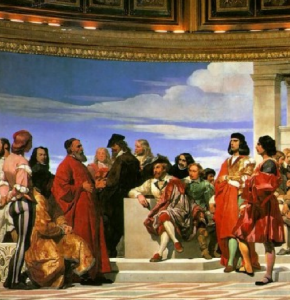 In the auditorium there is a large mural of the masters. da Vinci chats away with Reubens, Van Dyke shares a laugh besides Fra Angelico, all of them looking down at the students below, sitting on stiff wooden benches, listening to a lecture as the butts go numb.
In the auditorium there is a large mural of the masters. da Vinci chats away with Reubens, Van Dyke shares a laugh besides Fra Angelico, all of them looking down at the students below, sitting on stiff wooden benches, listening to a lecture as the butts go numb.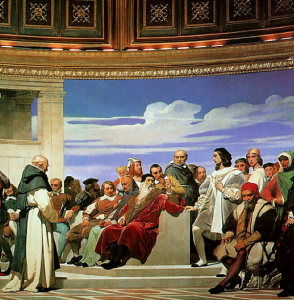 There is a covered courtyard, flooded with light, where students can work in the sun, protected from the elements, and a smaller, arcaded courtyard that leads to the chapel. A memorial to students who died fighting for France in the First World War dominates the space, a large chestnut tree reigning from above, nature faces tragedy in absolute beauty and our day has been enriched.
There is a covered courtyard, flooded with light, where students can work in the sun, protected from the elements, and a smaller, arcaded courtyard that leads to the chapel. A memorial to students who died fighting for France in the First World War dominates the space, a large chestnut tree reigning from above, nature faces tragedy in absolute beauty and our day has been enriched.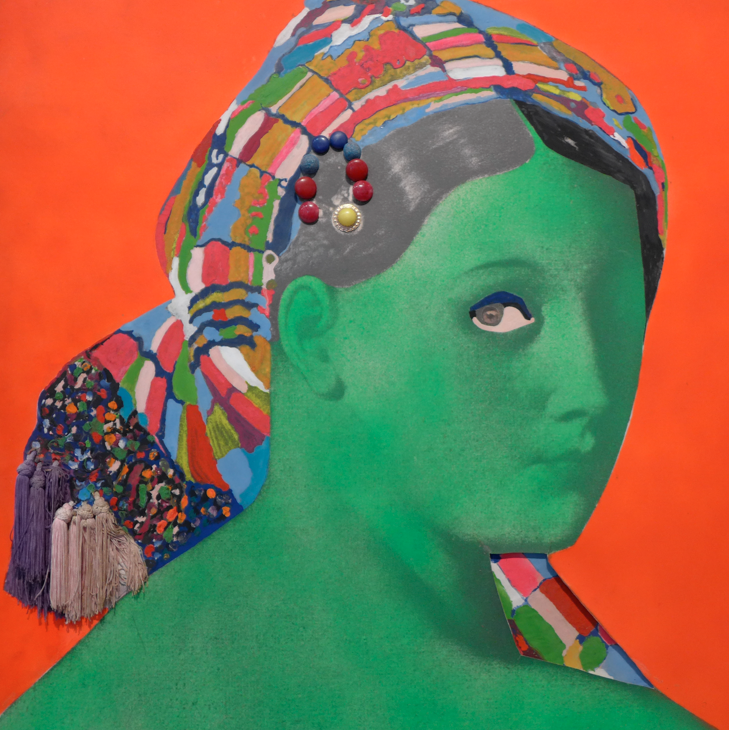
 started collaborating with its thriving ceramics industry. Jean Cocteau was dran to the area, which is how he met Raysse. The two did a joint show together in 1958, when Raysse was only 22.
started collaborating with its thriving ceramics industry. Jean Cocteau was dran to the area, which is how he met Raysse. The two did a joint show together in 1958, when Raysse was only 22.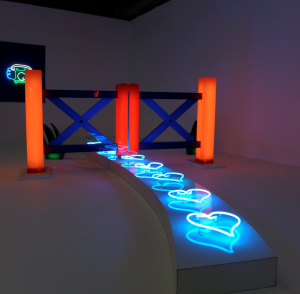 Their concept was “the poetic recycling of reality.” If you now the work of these artists, then Raysse draws on color as the primary source of power for his work.
Their concept was “the poetic recycling of reality.” If you now the work of these artists, then Raysse draws on color as the primary source of power for his work.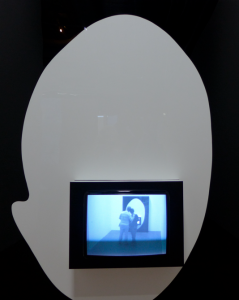
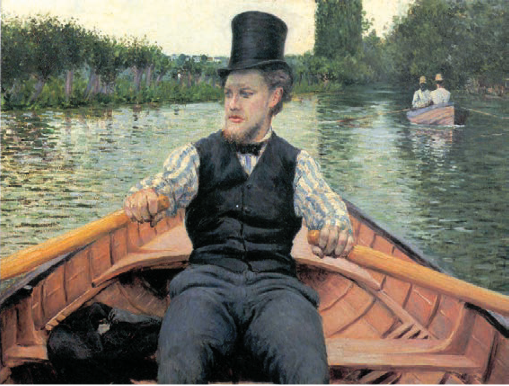
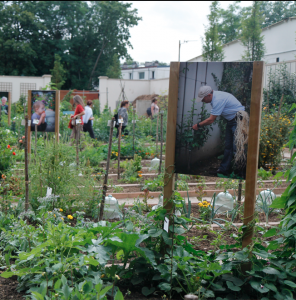
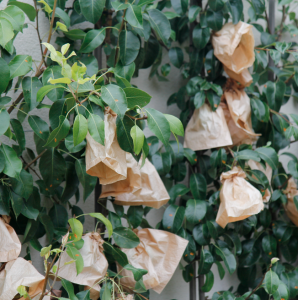

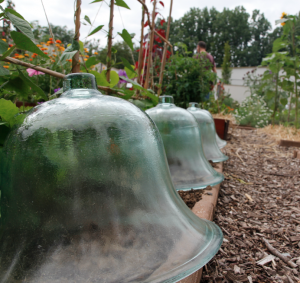
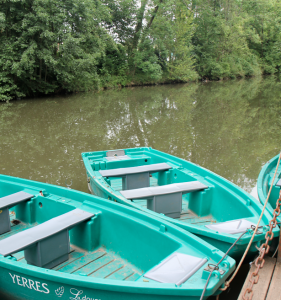
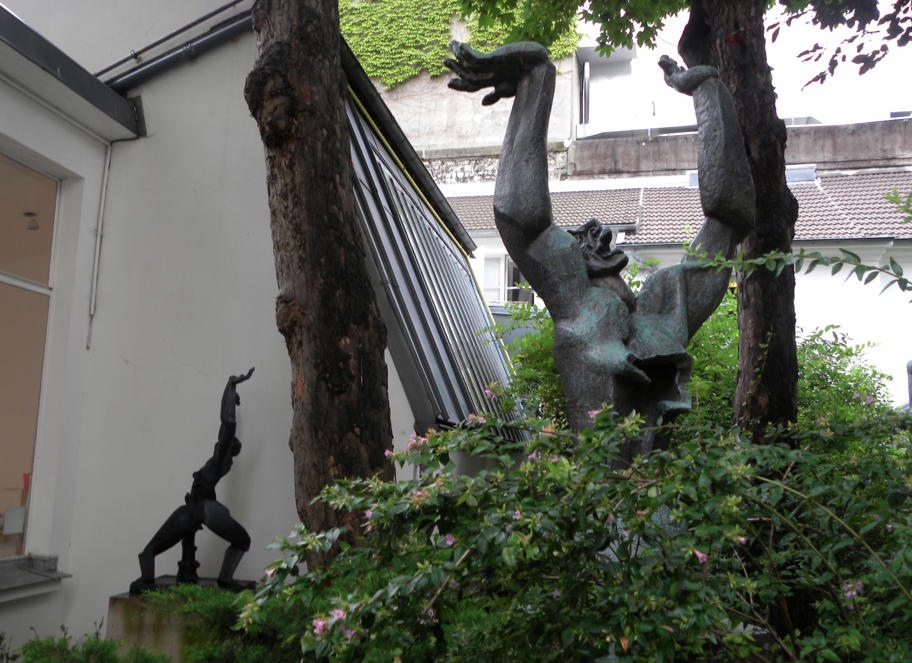
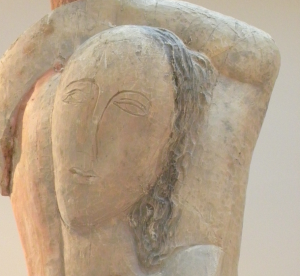

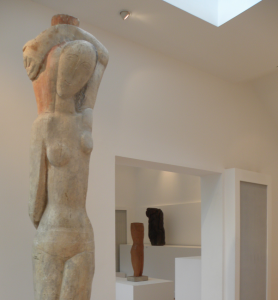 I found the larger-than-life sculptures particularly interesting : “Torso of the Destroyed City” in bronze visible in the garden, “Rebecca” or “Big Water Carrier” crafted in plaster displayed in Room 2, and “Prometheus” sculpted in elm, housed in the garden workshop. Visitors can actually walk all the way around each of these works to admire the detail.
I found the larger-than-life sculptures particularly interesting : “Torso of the Destroyed City” in bronze visible in the garden, “Rebecca” or “Big Water Carrier” crafted in plaster displayed in Room 2, and “Prometheus” sculpted in elm, housed in the garden workshop. Visitors can actually walk all the way around each of these works to admire the detail.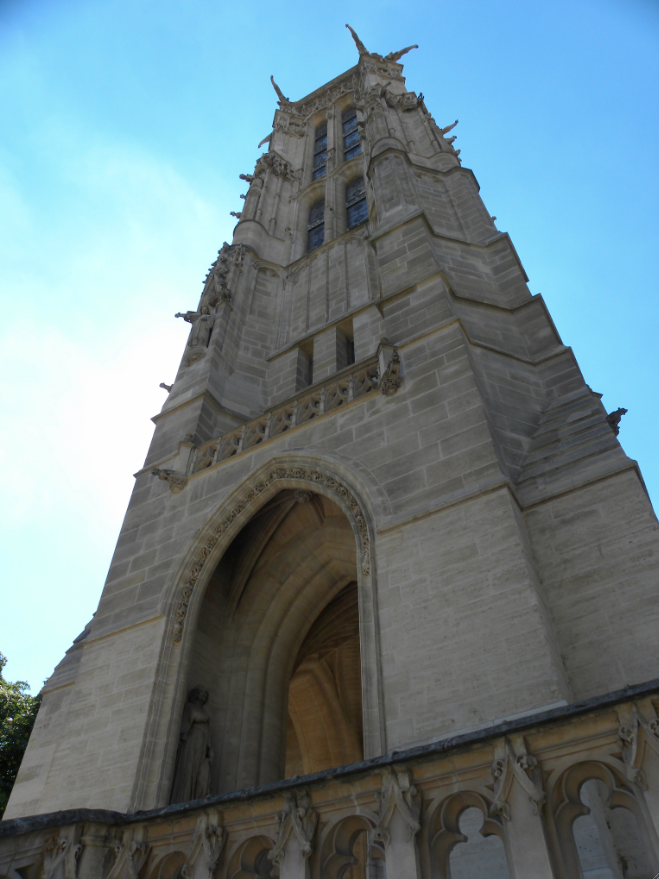
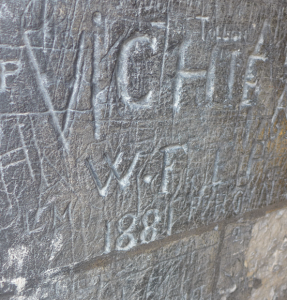

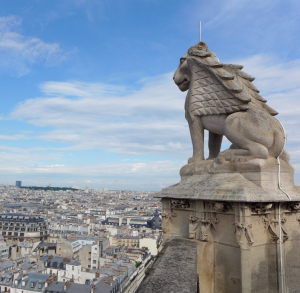 The Tour Saint Jacques is a Flamboyant Gothic bell tower, a modern 16th century addition to a 15th century church, St Jacques de la Boucherie. Boucherie is French for butchery and the church was surrounded by butcher shops and other businesses, including the public writing studio of Nicholas Flamel, who is buried below. For the last 600 or so years, it has been the starting place for the pilgrimage to St Jacques de la Compostelle. Following the French R
The Tour Saint Jacques is a Flamboyant Gothic bell tower, a modern 16th century addition to a 15th century church, St Jacques de la Boucherie. Boucherie is French for butchery and the church was surrounded by butcher shops and other businesses, including the public writing studio of Nicholas Flamel, who is buried below. For the last 600 or so years, it has been the starting place for the pilgrimage to St Jacques de la Compostelle. Following the French R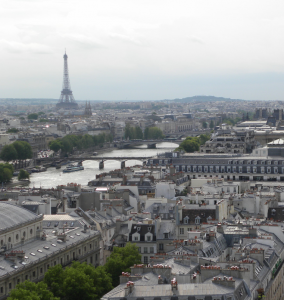 evolution the government owed a lot of money to a local businessman, so they gave him the church and he took it apart, selling the stones off to the highest bidders. Since then, the tower has inspired artists, scientists and intellectuals. Dumas wrote a story set in the park, and it is believed that Blaise Pascal used the site for his experiments with atmospheric pressure.
evolution the government owed a lot of money to a local businessman, so they gave him the church and he took it apart, selling the stones off to the highest bidders. Since then, the tower has inspired artists, scientists and intellectuals. Dumas wrote a story set in the park, and it is believed that Blaise Pascal used the site for his experiments with atmospheric pressure.

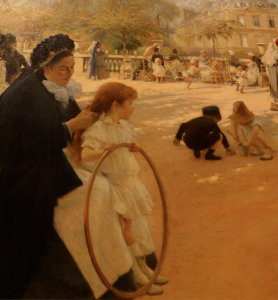 Until I reached the fashion room with illustrations of a Parisenne’s day, fans and gowns, which had me completely under its spell as I read about the Trottins. These were the young girls who would deliver hats to the haute couture clients and they were considered to be the epitome of good fashion and elegant taste, inspiring a journalist to write, “What differentiates the Parisienne from other women is a discreet elegance in every aspect of her social life; sobriety, taste, innate distinction, and the indefinable something only she possesses, that blend of bearing and modernity we call chic.”
Until I reached the fashion room with illustrations of a Parisenne’s day, fans and gowns, which had me completely under its spell as I read about the Trottins. These were the young girls who would deliver hats to the haute couture clients and they were considered to be the epitome of good fashion and elegant taste, inspiring a journalist to write, “What differentiates the Parisienne from other women is a discreet elegance in every aspect of her social life; sobriety, taste, innate distinction, and the indefinable something only she possesses, that blend of bearing and modernity we call chic.”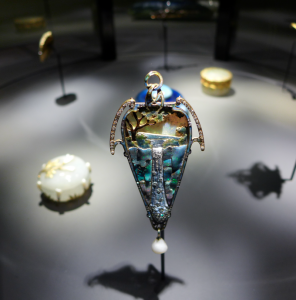 Further on, a space dedicated to the performing arts had a small theater playing the first sci-fi film ever made, Voyage to the Moon.
Further on, a space dedicated to the performing arts had a small theater playing the first sci-fi film ever made, Voyage to the Moon.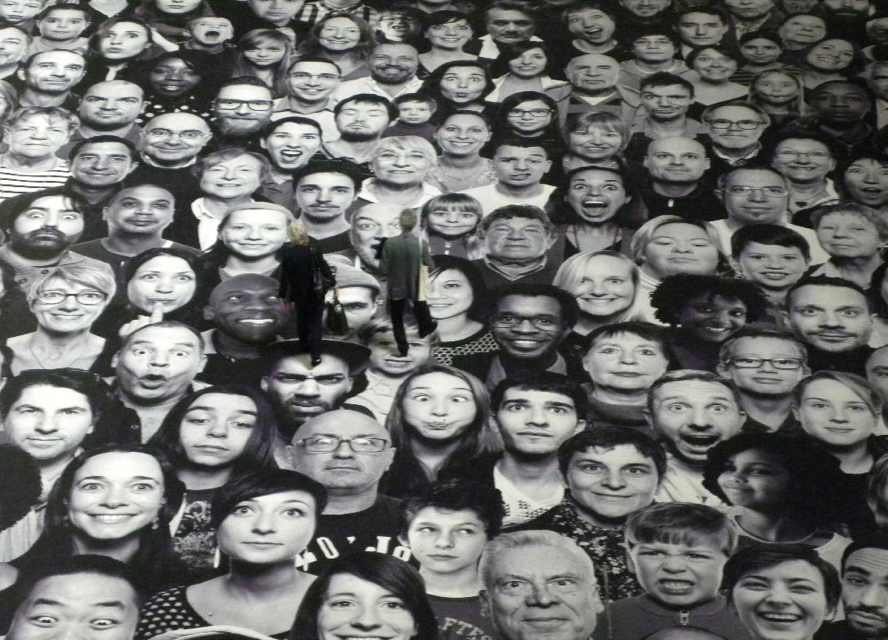 It is one of those BIG life questions, that no one has really answered. Mr French and I spend so much time exploring art that the question comes up often, especially as our tastes tend to be wildly different. Is it art? design? or just a really bad joke? Sometimes it can be hard to tell and my mind races to the tale of The Emperor’s New Clothes.
It is one of those BIG life questions, that no one has really answered. Mr French and I spend so much time exploring art that the question comes up often, especially as our tastes tend to be wildly different. Is it art? design? or just a really bad joke? Sometimes it can be hard to tell and my mind races to the tale of The Emperor’s New Clothes.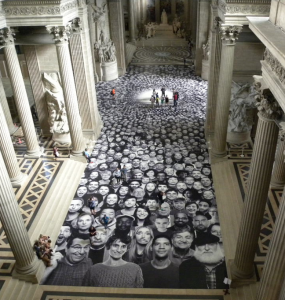 The question has been surfing the airwaves lately, questioning the legitimacy of street artist JR. The artist’s work is currently decorating the top of the Pantheon, while it under goes renovation with a monumental installation inside the memorium, until Oct 5. This isn’t the first time JR has graced the city with his astonishing photographic work.
The question has been surfing the airwaves lately, questioning the legitimacy of street artist JR. The artist’s work is currently decorating the top of the Pantheon, while it under goes renovation with a monumental installation inside the memorium, until Oct 5. This isn’t the first time JR has graced the city with his astonishing photographic work.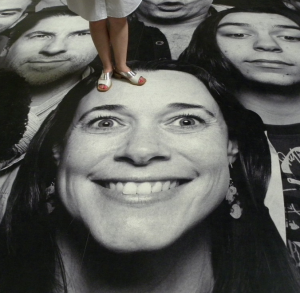 Several years ago he covered the quais and bridges on the Ile de la Cité with 10 metre long images of women’s eyes. The effect was moving, even before learning that they were the eyes of women who had witnessed great tragedy; war, famine, assassination.
Several years ago he covered the quais and bridges on the Ile de la Cité with 10 metre long images of women’s eyes. The effect was moving, even before learning that they were the eyes of women who had witnessed great tragedy; war, famine, assassination.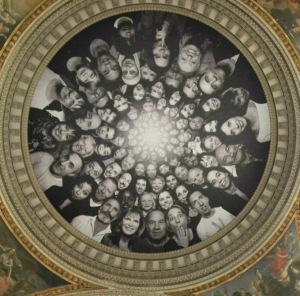 tremendous project. They are of every race, religion, color, and style with a fashion sense that runs from the prosaic to the goofy. JR has lined them up and laid them out, like a human tower of babel. They are tiered in size, starting out larger than life and rising to the size of a miniature poodle. Working in black and white has given the work an aesthetic harmony. The images are printed out on large plastic tiles, then laid out like an oriental carpet, covering the cross-shaped floor, where visitors are invited to walk. The effect is astonishing. You are walking on art. You are walking on people. And the people are gorgeous, in a wonderful, very real way.
tremendous project. They are of every race, religion, color, and style with a fashion sense that runs from the prosaic to the goofy. JR has lined them up and laid them out, like a human tower of babel. They are tiered in size, starting out larger than life and rising to the size of a miniature poodle. Working in black and white has given the work an aesthetic harmony. The images are printed out on large plastic tiles, then laid out like an oriental carpet, covering the cross-shaped floor, where visitors are invited to walk. The effect is astonishing. You are walking on art. You are walking on people. And the people are gorgeous, in a wonderful, very real way.